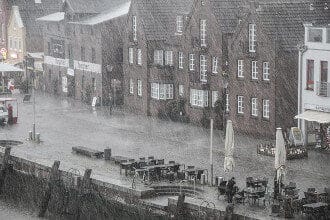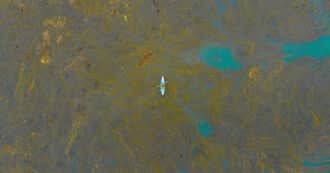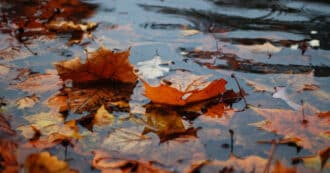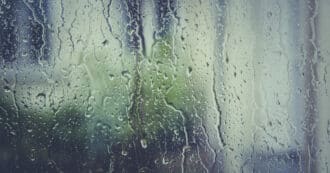By Sydney Cohen – Urban runoff pollution is another of the world’s environmental issues. Cities can contain up to 90 percent of impervious surfaces including roofs, sidewalks, and streets, where water accumulates and quickly runs away from the surface.
Why is Urban Runoff a Problem?
Urban places often contain major sources that contribute to runoff and pollution. Spaces like construction sites, car-washing and commercial car washes, parking lots, and factors such as land development and excess oil and grease are all sources of pollution that eventually make their way into rivers. Air pollution, which is often higher in urban areas, also contributes to water pollution, as the water can absorb pollutants from the air.
Impervious surfaces are primarily artificial structures such as paved surfaces like roads, sidewalks, driveways, and parking lots. In addition, all industrial areas that have an impervious cover of water-resistant materials like asphalt, concrete, brick, stone, and even rooftops contribute to urban runoff. Because impervious surfaces are not water-absorbent, they cause urban runoff containing pollutants that can harm aquatic organisms, freshwater ecosystems, and hamper drinking water quality.
According to the Environmental Protection Agency (EPA), “stormwater runoff is generated from rain and snowmelt that flows over land or impervious surfaces, such as paved streets, parking lots, and building rooftops, and does not soak into the ground. Runoff can pick up and deposit harmful pollutants like trash, chemicals, and dirt/sediment into streams, lakes, and groundwater. Construction sites, lawns, improperly stored hazardous wastes, and illegal dumping are all potential sources of stormwater pollutants.” As one can imagine, storm-water runoff is much more detrimental to our river ecosystems when it comes from urban areas. Construction sites can contain high concentrations of heavy metals, which negatively affect our water quality and harm ecosystems.
Urban Stormwater Runoff
According to the Massachusetts Clean Water Toolkit, “pollution in urban environments comes from a variety of sources. Storm-water is exposed to these sources as it flows over driveways, roads, parking areas, industrial sites, lawns and rooftops. In the case of septic systems, pollutants can enter the groundwater and eventually surface water bodies.”
Because there are so many sources that stormwater passes through, particularly in urban areas, often, pollution that enters our waterways through runoff is determined as nonpoint source pollution.
The EPA describes that nonpoint source pollution can include:
- Excess fertilizers, herbicides, and insecticides from agricultural lands and residential areas
- Oil, grease, and toxic chemicals from urban runoff and energy production
- Sediment from improperly managed construction sites, crop and forest lands, and eroding streambanks
- Salt from irrigation practices
- Bacteria and nutrients from livestock, pet waste, and faulty septic systems
Nonpoint source pollution is incredibly difficult to target and minimize because the source of pollution is not easily tracked once pollutants enter our world’s waterways. This is part of the danger of urban runoff – it is difficult to trace and in turn, difficult to fix.
Where Does Urban Runoff Occur?
In short, urban runoff can occur in any urban area. Stormwater discharge occurs when rainfall or snowmelt is swept into the ground or on impervious surfaces, including asphalt roads, parking lots, and building facades, and cannot be absorbed into the ground.
In highly populated urban areas, some of the aspects that make urban runoff significantly more dangerous are combined sewer overflows, which contain untreated waste, as a result of rainwater and snowmelt. When this is paired with a flooded storm drain, for example, the amount of hazardous waste that is then brought into our waterways is dangerous to human health. Landscape irrigation also contributes to urban runoff. When people water their lawns, for example, they are adding to the surface waters that are carrying pollutants through urban areas and into waterways.
How Can We Prevent Urban Runoff?
The EPA describes the best ways that communities can employ management practices to control stormwater and prevent pollution at its source, protecting our waterways.
- Public education and outreach with homeowners and businesses on topics such as proper use and storage of household toxic materials, equipment maintenance practices, and responsible lawn care and landscaping help prevent pollution.
- Erosion and sediment control measures help prevent sediment, chemicals, and nutrients from washing off construction sites.
- Land use controls and/or incentives restrain certain activities within a defined area, such as a source water protection area, or encourage certain land uses or best management practices. Local government officials can use subdivision growth controls, zoning ordinances, overlay districts, and other land use controls to limit impervious surfaces, encourage open space, impose runoff-efficient site design standards, and locate high-risk activities away from drinking water sources, or facilitate cluster development to reduce runoff.
All of these management practices work to protect human health by managing urban runoff. These environmentally friendly practices work at minimizing pollution sources and pollutant load.
Religion and Urban Runoff
Inside Climate News discusses how religious groups are working to address urban runoff, especially in the city of Baltimore which has experienced severe flooding in recent years from climate-change induced extreme weather. The organization, Interfaith Partners for the Chesapeake is working hard in Baltimore “to help as many as possible of the region’s more than 19,000 religious congregations produce safer stormwater runoff by planting trees, creating gardens and other projects that reduce the amount of pollutants or slow the flow of water.”
Interfaith Partners for the Chesapeake shows that religious organizations can be natural allies for stopping climate change and mitigating its worst effects. God has given us all one planet. It’s up to us to take care of it and each other.
* Featured image source
Interested in learning more about water pollution? Check out this blog post about the effects of water pollution!








